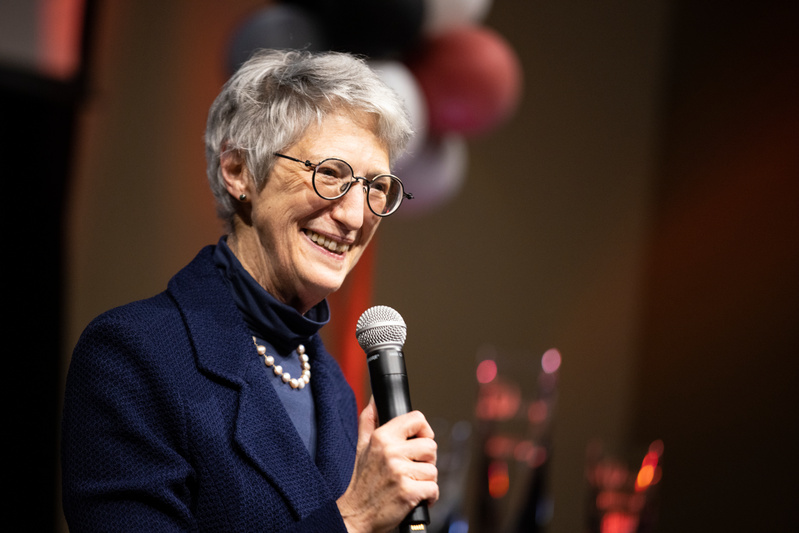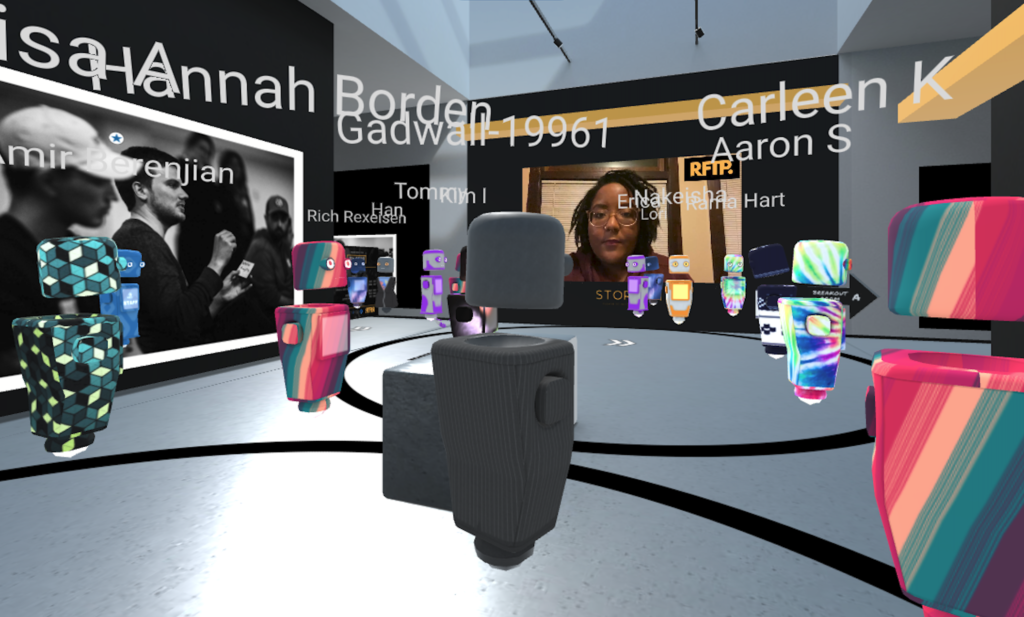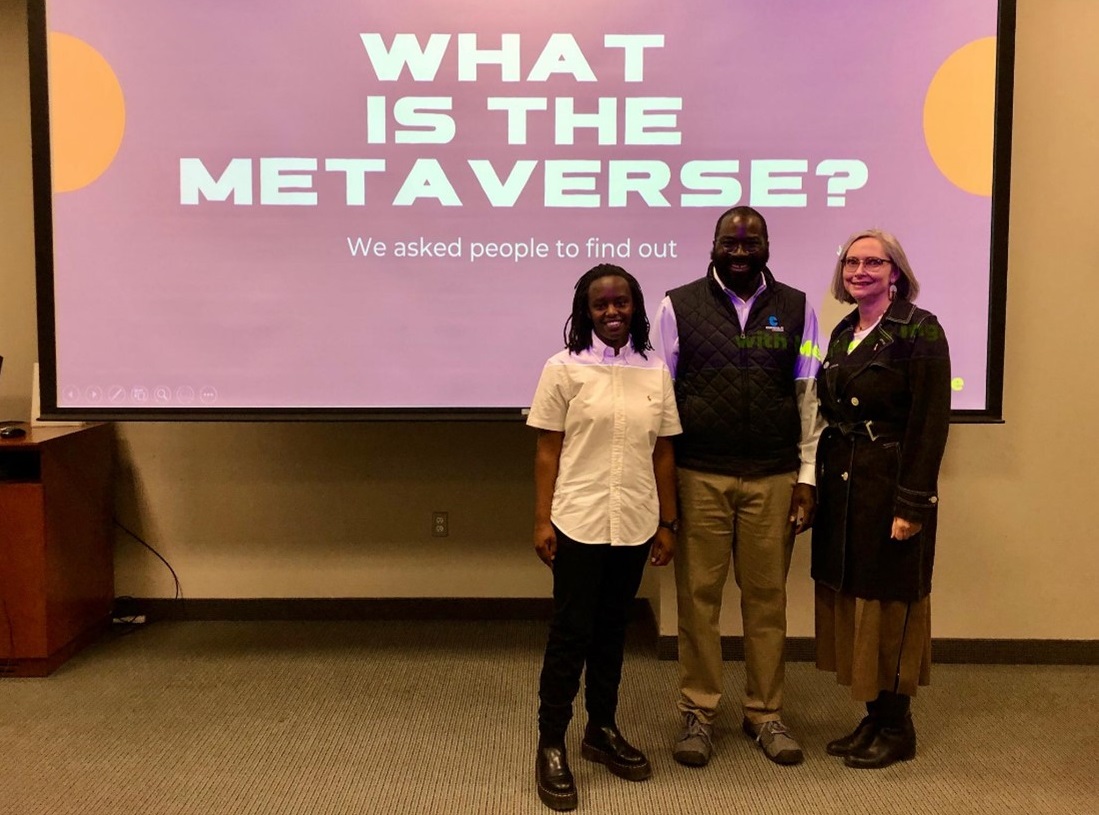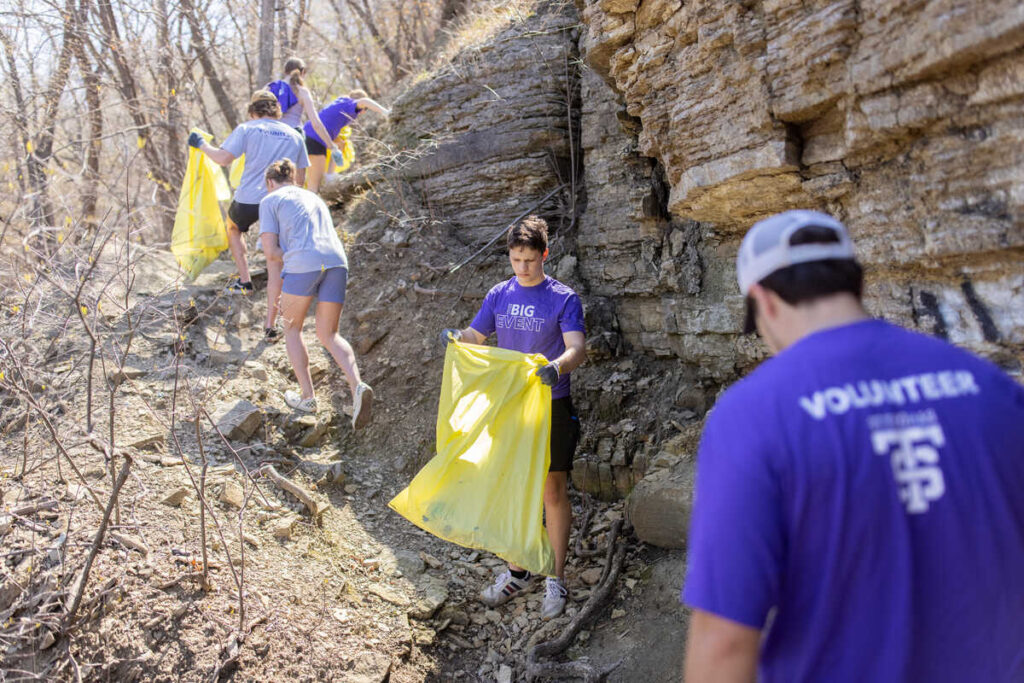Over the last year there has been one buzzword dominating news headlines: the metaverse. But what really is it?
On Nov. 7, 2022, Lee Winbush ’17 MBA, 3M engineer, St. Thomas adjunct professor and Business in a Digital World (BDW) executive fellow, presented that question to over 100 attendees at “Enter the Metaverse: Demystifying This Year’s Buzziest Trend” as part of the Business in a Digital World Speaker Series: Demystifying Tech.
The event kicked off with a video featuring St. Thomas mechanical engineering student Mellissa Ingabire asking students and faculty, “What is the metaverse?” It was clear that though some people gave vague descriptions, no one could give a clear definition and many people simply didn’t know. Luckily for the bright minds who attended this event, Winbush was prepared to lead them through the buzz to a clearer understanding of this emerging technology.
Winbush explained the metaverse by breaking down some of the other emerging technology concepts around it. He described the journey of the internet through Web 1.0 (information) and Web 2.0 (content and monetization) to Web3, saying, “Web3 is … this move toward connecting people, places, and assets together instead of just you being monetizable items.” Winbush gave a high-level description of blockchain technology and how it powers Web3 and the concept of the metaverse.
Although the metaverse could seem like a big topic to discuss in one hour, Winbush expertly navigated the audience clearly through these concepts. He discussed what the metaverse is and walked through some of the current issues such as barriers of access to things like crypto for most people.
He then turned to some buzz topics. “An introduction to the metaverse wouldn’t be complete without one of the hot things of this last summer, which are NFTs,” Winbush said. “Non-fungible tokens are contrasted with fungible assets like money. So, a term that’s coming up these days is digital collectible, one example of an NFT. So, it could represent artwork.” He walked through another example of how NFTs could be harnessed for memberships and exclusivity for a company like a small batch, high-end winery. “I think that some of these other use cases are really going to evolve now that we’re in this down market and we have a lot of developers building.”
Winbush broke down the ways a variety of metaverse platforms are being used in play, work and learning. He gave many examples of companies who are emerging in the metaverse space.
To wrap up his presentation, Winbush invited the audience into this world of information. “So now it’s your turn to truly enter the metaverse,” he said. Winbush shared a slide of some of his top resources to stay in touch with what is going on in the metaverse.
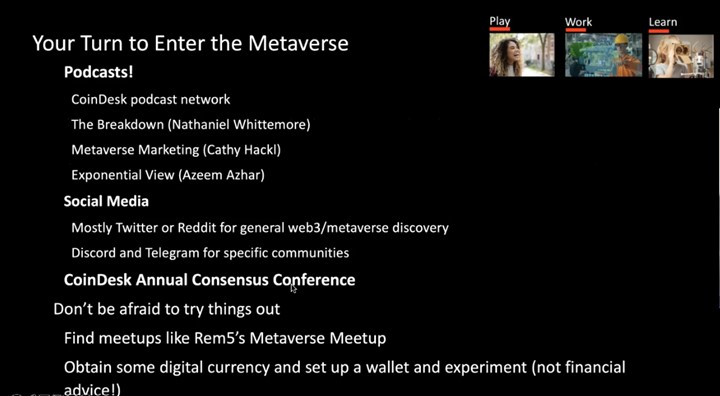
Business in a Digital World Academic Director Lisa Abendroth spoke briefly about when the impact of the metaverse is predicted to be felt by the public at large by examining the recently released Gartner Hype Cycle. “This was the first year, looking at 2022, that the metaverse was on there,” she said. “The metaverse, Gartner’s predicting, will take more than 10 years before it really hits that plateau of productivity.”
That led to various questions from the Zoom and in-person audiences. When one student asked how to show they are ready to work in this space, Winbush and Abendroth spoke to not only the hard skills that can benefit them, but the importance of leadership skills and understanding the reason the technology is used. Winbush said, “The tech is great, but what’s that business case look like, what are you trying to achieve, how are you helping your consumer?”
Jonathan Keiser, the VP of online learning and academics at St. Thomas, tied the conversation directly to St. Thomas’ work in education.
“You made me think about a Brookings Institute report that I read that discussed how, in a review of educational apps, 90% of apps were of the lowest quality because learning scientists weren’t involved in the development of the app. The expertise in whatever content area that is, needs to be involved in this Web3 version of these experiences, and I wondered what lessons might we learn from that.”
Abendroth shared a quote that happened to be from that same Brookings report. “It is our job to specify how engagement in this always-on virtual universe augments education rather than detracts from it and how it can preserve the key socially interactive qualities that are core to how humans learn,” she said.
As the speakers thanked the people involved with making this event happen and acknowledged the lessons shared in Anderson Student Center that day, Mellissa Ingabire took the mic again and left the audience with a specific request. “As you carry on today, please remember the importance of having very innovative and ethical conversations in web places to help make a bright future and better future for everyone,” she said.
This event was hosted by the Business in a Digital World Initiative in the Opus College of Business in partnership with St. Thomas E-Learning and Research. See the members of these St. Thomas offices and initiatives below.
The event was co-sponsored by the Tommie Marketing Club, Real Estate Society, Computer Science Club, and Undergraduate Business Council.
Business in a Digital World:
- Kristina Schatz, executive director
- Lisa Abendroth, academic director
- Calli McCartan, innovation coordinator
St. Thomas E-Learning and Research (co-sponsor):
- Jonathan Keiser, associate VP, online learning and academic ITS
- Lisa Burke, director
- Eric Tornoe, associate director, research computing
More on Business in a Digital World
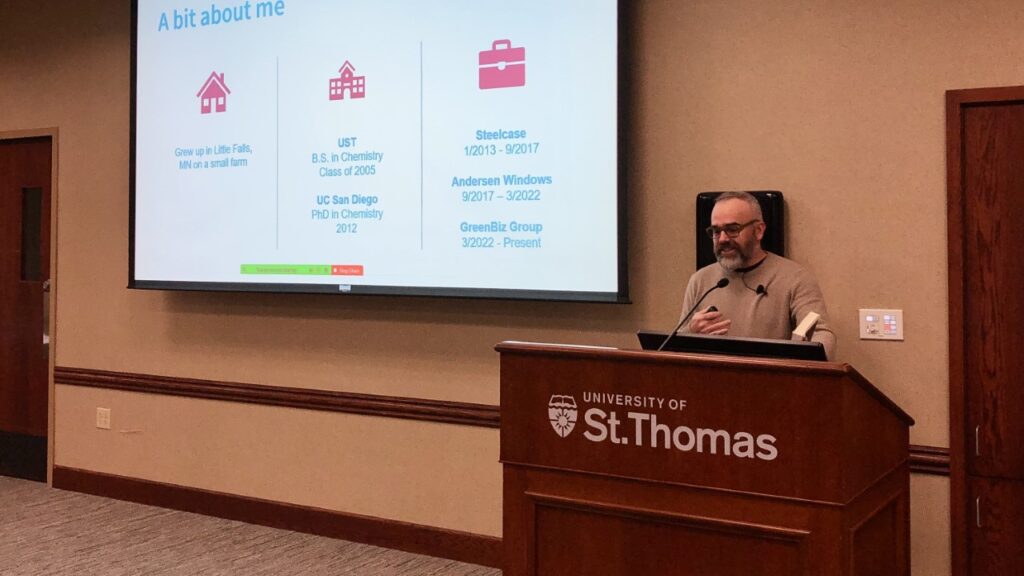
Experts Share How Blockchain Supports Circular Economy
Business & Law
Students Gain Real-world Skills Through Opus Tech Program
Business & Law